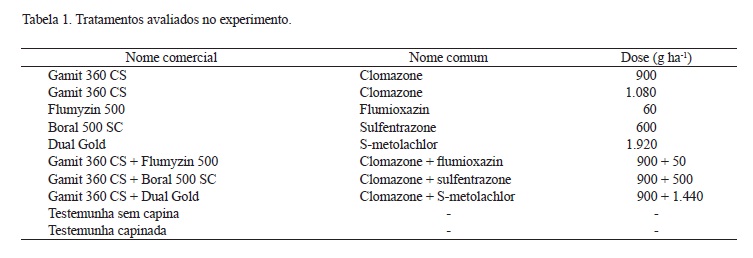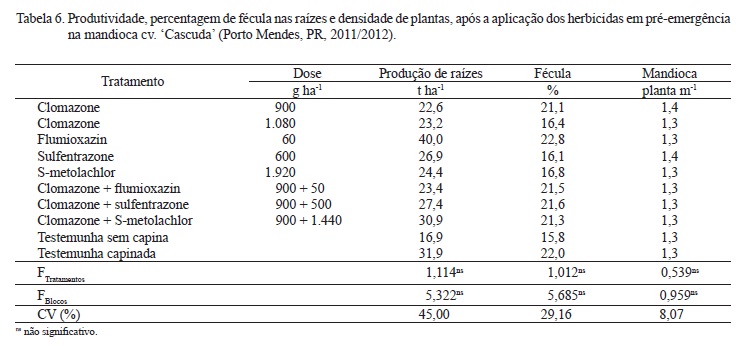The chemical control of weeds stands out as an important tool for obtaining high yields in cassava crops. This study aimed at evaluating the selectivity and efficiency of pre-emergent herbicides on cassava ('Cascuda' cultivar) crop. The experimental design was randomized blocks, with ten treatments and four replications. The treatments consisted of clomazone (900 g ha-1 and 1,080 g ha-1), flumioxazin (60 g ha-1), sulfentrazone (600 g ha-1), S-metolachlor (1,920 g ha-1), clomazone + flumioxazin (900 + 50 g ha-1), clomazone + sulfentrazone (900 + 500 g ha-1) and clomazone + S-metolachlor (900 + 1,440 g ha-1), as well as a weeded and a non-weeded control. The weed community was composed by 9 families and 12 species, with the Asteraceae and Poaceae families presenting the highest number of species. The pre-emergent herbicides were selective for 'Cascuda' cultivar cassava plants. The herbicides were effective in controlling weeds, with flumioxazin (60 g ha-1), sulfentrazone (600 g ha-1), S-metolachlor (1,920 g ha-1) and the mixtures of clomazone + flumioxazin (900 + 50 g ha-1), clomazone + sulfentrazone (900 + 500 g ha-1) and clomazone + S-metolachlor (900 + 1,440 g ha-1) presenting the highest residual effect.
Manihot esculenta L. Crantz; Asteraceae; Poaceae; weed







